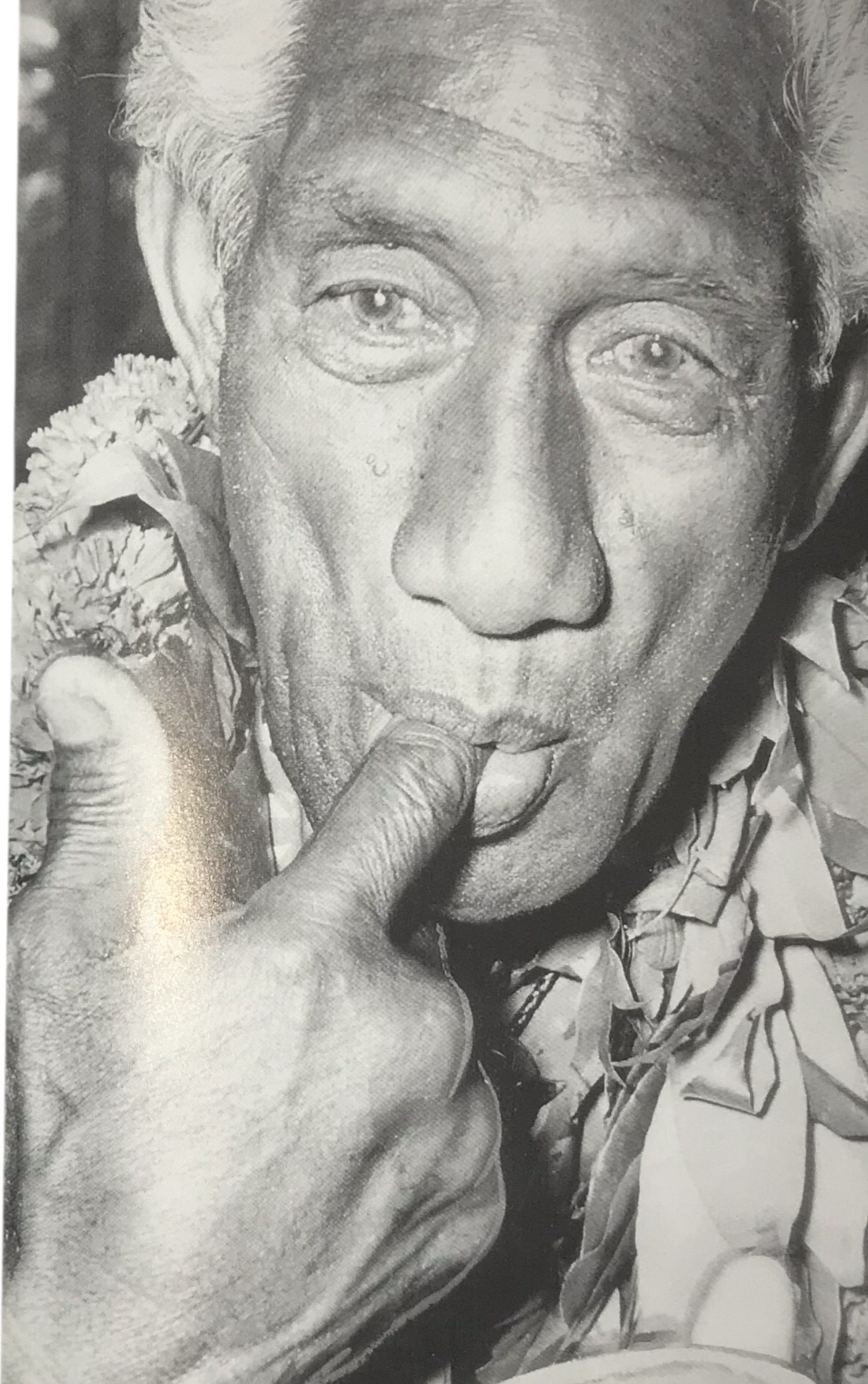I just completed a Bowflex workout when the legendary Duke Kahanamoku suddenly came to mind! In a flash, I cleaned up and settled in front of my computer, ready to unwind before dinner.
What was on my mind? Poi—the delightful dish that Duke cherished above all others. He would sprinkle it on everything he could find! Yet, during his travels on the mainland or abroad, there were times he endured up to six months without it.
Now, what’s the quintessential image of Duke with his beloved poi? I have the perfect photo for my blog, sourced from “Memories of Duke: The Legend Comes to Life.”
The image portrays him with one finger pressed to his mouth while holding a poi, a gesture that evokes fond memories for his friends from their youth. They would affectionately say to him, “Duke Lua tonight,” to which he would respond by placing a finger to his lips, suggesting he might be savoring poi.
According to various accounts, Duke had a deep affection for poi, leading his friends to frequently tease him about it. During his early years, his family cultivated ample taro on their land in Kalia to meet their needs.
To delve deeper into the world of poi, I undertook a brief research endeavor. I discovered that poi is made from the root of the taro plant, known as “kalo” in Hawaiian. It is cooked, mashed into a paste, and mixed with water to achieve the desired consistency. The fermentation process, a natural flavor enhancer, determines its taste and texture.
This exploration reminded me of my own experiences with taro, which we referred to as “Gabi” in my dialect. In my youth, we boiled it and enjoyed it like steamed yam, or blended it with vegetables.
Moreover, I fondly recall not only the roots but also the leaves, particularly when prepared with fish and coconut milk in a dish we call “Ginataang Gabi.”
I also thought of ube, a type of purple taro that is often steamed and has gained popularity in recent years. Once transformed into powder, it has become a beloved ingredient in dishes such as boba tea, ube cake, and ube bibingka.
I recall watching an interview with Nadine, Duke’s widow, where she mentioned that his favorite food remained poi until his passing. She recounted that as a young man, his diet consisted primarily of poi. Even as an adult, after dining in the world’s finest restaurants, he still craved poi, often enjoying it alongside corned beef, raw onions, or cold canned salmon.
I know firsthand that taro plants flourish in areas with abundant water, making them readily accessible in places like Hawaii and my home country, the Philippines.
This reflection underscores the simplicity of Duke’s character and his deep connection to Hawaiian culture, which is why he is cherished both in his time and today, with his legacy thriving among the younger generations in Hawaii.
This contemplation led me to ponder my own favorite food from my homeland. I would have to say it is sinigang and pritong bangus, a combination of various vegetables in a tamarind soup that gives it a delightful sourness, paired with fried milkfish.
What about you? What is your favorite dish?
